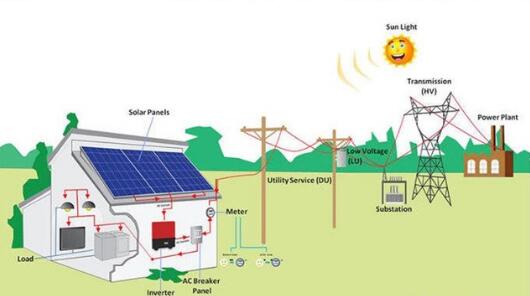
PV cable Often exposed to the sun, the solar system is often used in harsh environmental conditions, such as high temperature and ultraviolet radiation. In Europe, sunny days will result in the on-site temperature of the solar system up to 100 ° C. At present, we can use PVC, rubber, TPE and high-quality cross link materials. Unfortunately, rubber cables with a rated temperature of 90 ° C and even PVC cables with a rated temperature of 70 ° C are often used outdoors. Many contractors do not choose special cables for solar systems in order to save costs, Instead, ordinary PVC cables are selected to replace photovoltaic cables, which obviously will greatly affect the service life of the system.
The characteristics of photovoltaic cable are determined by its special insulation material and sheath material, which we call cross-linked PE. After irradiation by irradiation accelerator, Cable material Its molecular structure will change, thus providing its various properties. Mechanical load resistance In fact, during installation and maintenance, the cable can be routed on the sharp edge of the roof structure, and the cable must withstand pressure, bending, tension, cross tensile load and strong impact. If the strength of the cable sheath is not enough, the cable insulation layer will be seriously damaged, which will affect the service life of the entire cable, or lead to short circuit, fire, personal injury and other problems.
Performance of photovoltaic cable
1. DC resistance
When the finished cable is 20 ℃, the DC resistance of conductor core shall not be greater than 5.09 Ω/km.
2. Immersion voltage test
The finished photovoltaic cable (20m) will not break down after being immersed in water at (20 ± 5) ℃ for 1h for 5min voltage test (AC 6.5kV or DC 15kV).
3 Long term withstand DC voltage
The sample is 5m long, put it into distilled water containing 3% sodium chloride (NaCl) at (85 ± 2) ℃ for (240 ± 2) h, and both ends are 30cm above the water surface. Apply DC 0.9kV voltage between the wire core and water (the conductive wire core is connected to the positive pole, and the water is connected to the negative pole). After taking out the sample, carry out the immersion voltage test. The test voltage is AC 1kV, and it is required that there is no breakdown.
4 Insulation resistance
The insulation resistance of finished photovoltaic cable shall not be less than 1014 Ω at 20 ℃ ˙ Cm, the insulation resistance of finished cable at 90 ℃ is not less than 1011 Ω ˙ cm。
5 Sheath surface resistance
The surface resistance of finished PV cable sheath shall not be less than 109 Ω.












